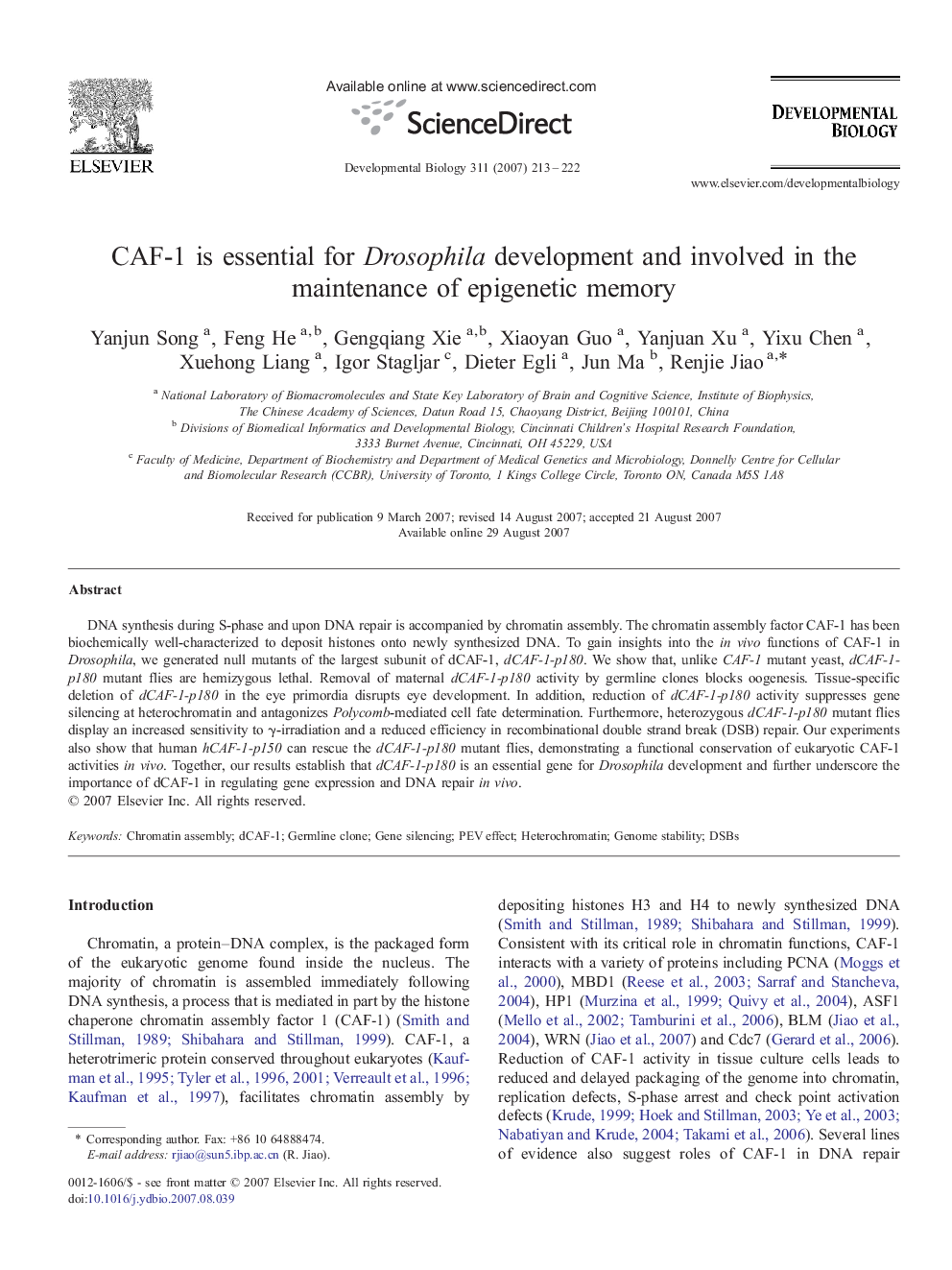| Article ID | Journal | Published Year | Pages | File Type |
|---|---|---|---|---|
| 2174859 | Developmental Biology | 2007 | 10 Pages |
DNA synthesis during S-phase and upon DNA repair is accompanied by chromatin assembly. The chromatin assembly factor CAF-1 has been biochemically well-characterized to deposit histones onto newly synthesized DNA. To gain insights into the in vivo functions of CAF-1 in Drosophila, we generated null mutants of the largest subunit of dCAF-1, dCAF-1-p180. We show that, unlike CAF-1 mutant yeast, dCAF-1-p180 mutant flies are hemizygous lethal. Removal of maternal dCAF-1-p180 activity by germline clones blocks oogenesis. Tissue-specific deletion of dCAF-1-p180 in the eye primordia disrupts eye development. In addition, reduction of dCAF-1-p180 activity suppresses gene silencing at heterochromatin and antagonizes Polycomb-mediated cell fate determination. Furthermore, heterozygous dCAF-1-p180 mutant flies display an increased sensitivity to γ-irradiation and a reduced efficiency in recombinational double strand break (DSB) repair. Our experiments also show that human hCAF-1-p150 can rescue the dCAF-1-p180 mutant flies, demonstrating a functional conservation of eukaryotic CAF-1 activities in vivo. Together, our results establish that dCAF-1-p180 is an essential gene for Drosophila development and further underscore the importance of dCAF-1 in regulating gene expression and DNA repair in vivo.
